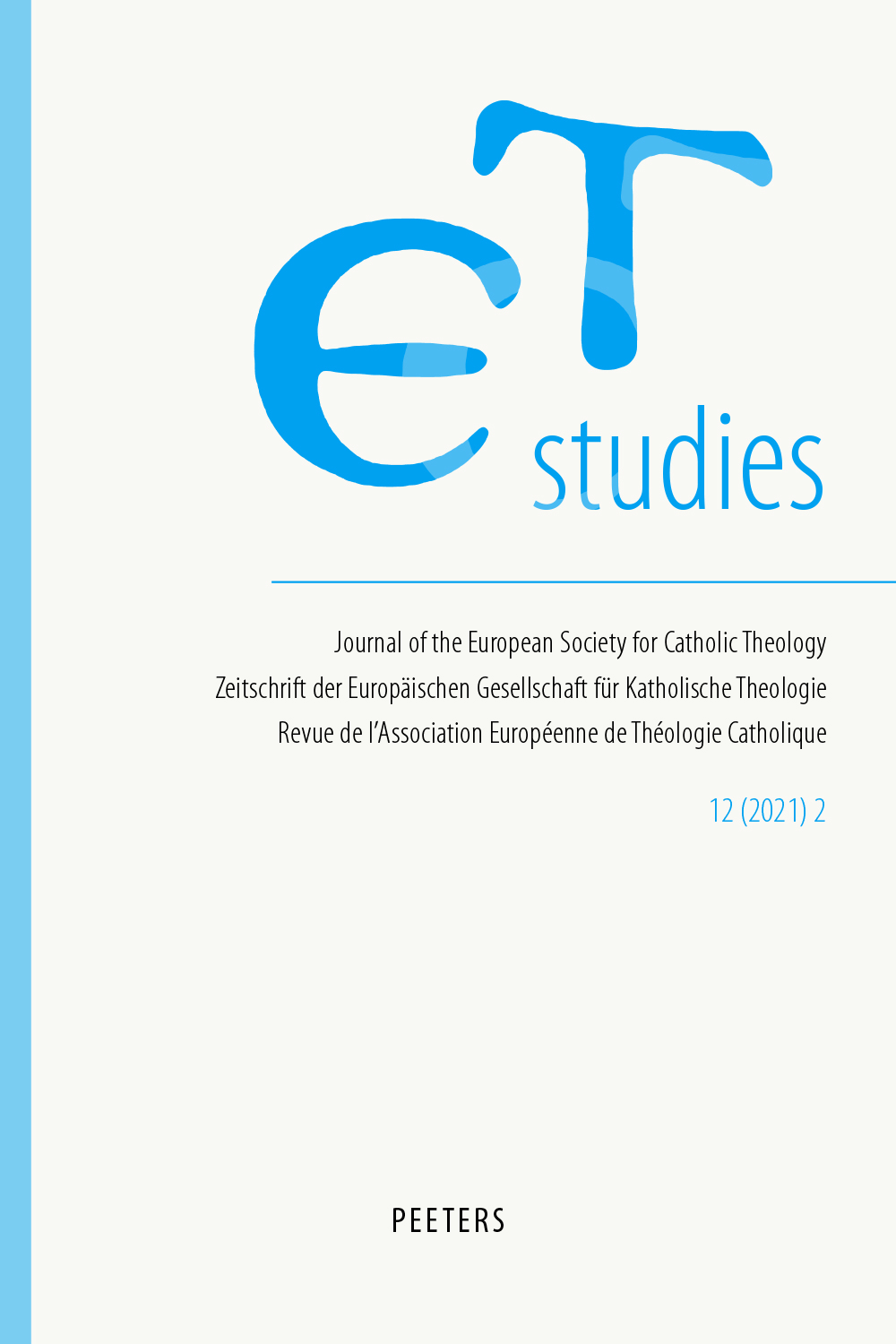 previous article in this issue previous article in this issue | next article in this issue  |

Preview first page |
Document Details : Title: Neue Horizonte der Rezeption und Hermeneutik des Konzils Subtitle: Das II. Vaticanum in weltkirchlichen und interkulturellen Perspektiven Author(s): ECKHOLT, Margit Journal: ET-Studies Volume: 16 Issue: 1 Date: 2025 Pages: 11-29 DOI: 10.2143/ETS.16.1.3294231 Abstract : 60 Jahre nach Abschluss des II. Vatikanischen Konzils reflektiert der Beitrag auf die neue Phase der Rezeption des Konzils, die mit dem Pontifikat von Franziskus begonnen hat. Das Welt-Kirche-Werden, von dem Karl Rahner am Abschluss des Konzils gesprochen hat, tritt mit Franziskus in eine neue Etappe. Der Beitrag erinnert in einem ersten Schritt an die verschiedenen Phasen der Rezeption des Konzils und geht auf die Entstehung einer Konzilshermeneutik im europäischen Kontext ein. Im Blick auf heute leitende Studien zur Konzilshermeneutik werden die Ansätze von Peter Hünermann und Christoph Theobald kurz skizziert. In einem zweiten Schritt wird die Brücke in den internationalen Kontext geschlagen: Verbindendes Moment der Rezeption des Konzils in den Kontinenten des Südens ist der Ausgangspunkt beim Prinzip der Pastoralität und die Analyse der Zeichen der Zeit, wie sie die Pastoralkonstitution Gaudium et Spes vorgelegt hat. Im vorliegenden Beitrag kann diese kontinentale Rezeption nur in einen allgemeinen Rahmen gestellt werden, vertieftere Überlegungen können sich in einem weiteren Beitrag anschließen. 60 years after the conclusion of the Second Vatican Council, the article reflects on the new phase of the reception of the Council that began with the pontificate of Francis. The 'becoming-world-church' of which Karl Rahner spoke at the end of the Council has entered a new phase with Francis. First, the article recalls the various phases of the reception of the Council and looks at the emergence of a Council hermeneutic in the European context. The approaches of Peter Hünermann and Christoph Theobald are briefly outlined with regard to today’s leading studies on Council hermeneutics. Second, a bridge is built towards an international context: here the unifying factor in the reception of the Council in the continents of the South is the starting point in the principle of pastorality (Pastoralität) and the analysis of the signs of the times, as presented in the pastoral constitution Gaudium et Spes. In this article, this continental reception can only be placed in a general framework, while more in-depth reflections can follow in another article. 60 ans après la conclusion du Concile Vatican II, l’article réfléchit à la nouvelle phase de la réception du Concile qui a commencé avec le pontificat de François. Le «devenir-Église-monde» dont parlait Karl Rahner à la fin du Concile, est entré dans une nouvelle phase avec François. Dans un premier temps, l’article rappelle les différentes phases de la réception du Concile et s’intéresse à l’émergence d’une herméneutique du Concile dans le contexte européen. Les approches de Peter Hünermann et de Christoph Theobald sont brièvement décrites dans l’optique d’études sur l’herméneutique conciliaire qui font autorité aujourd’hui. Ensuite, un pont est jeté vers le contexte international: le facteur unificateur de la réception du Concile dans les continents du Sud est le point de départ du principe de pastoralité et de l’analyse des signes des temps, tels qu’ils sont présentés dans la constitution pastorale Gaudium et Spes. Dans cet article, cette réception continentale ne peut être placée que dans un cadre général, tandis que des réflexions plus approfondies pourront suivre dans un autre article. |
 |


